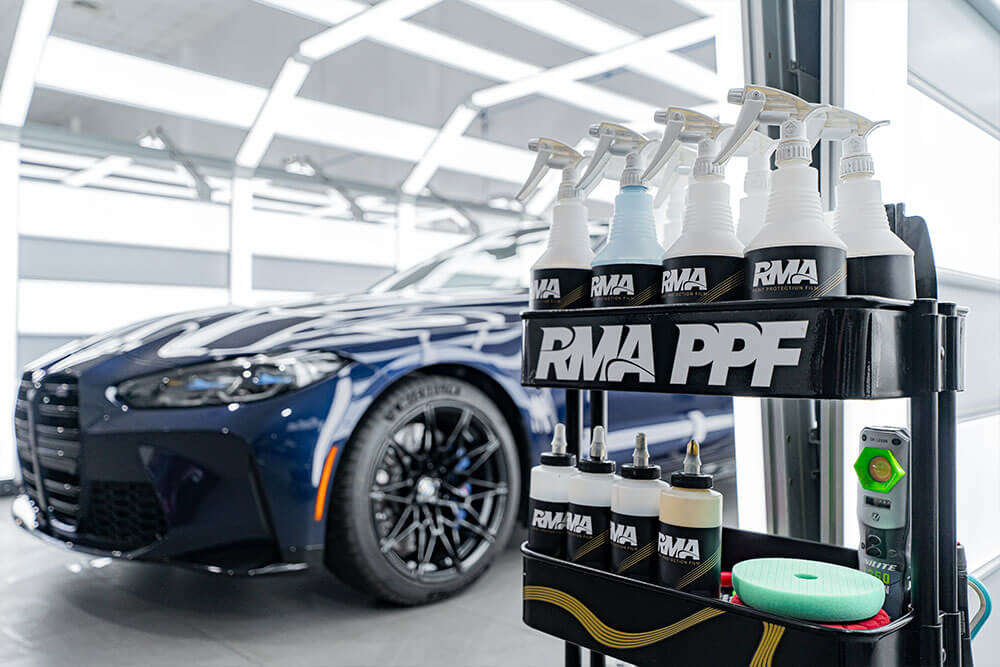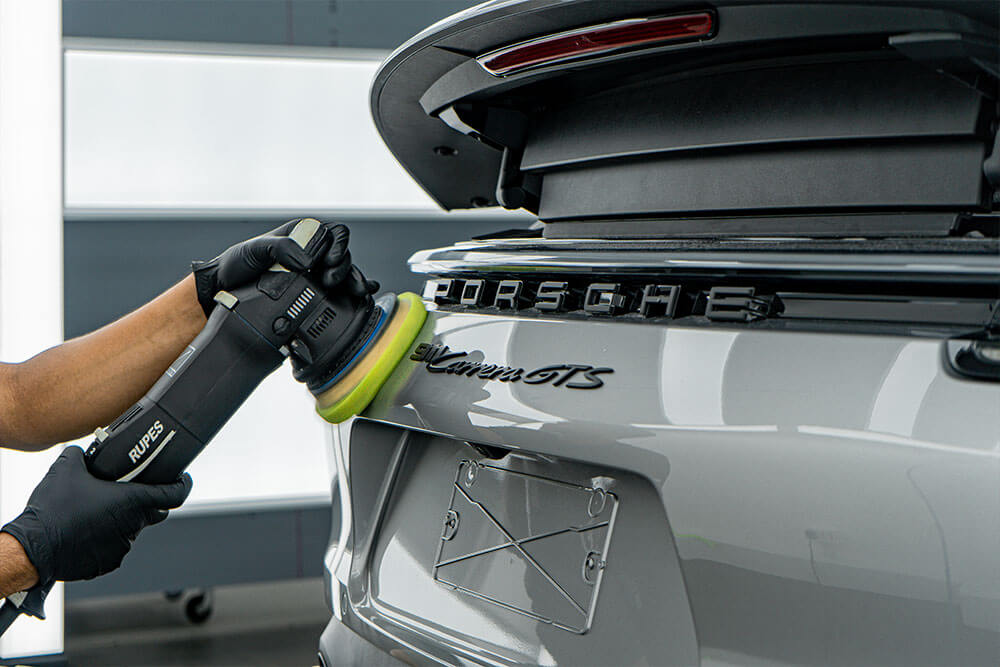
Maintaining a Ceramic Coated Vehicle: Everything You Need to Know
Owning a ceramic-coated vehicle means you’ve invested in a cutting-edge solution designed to keep your car’s paint looking sleek and protected from the elements. Ceramic coatings are known for providing a high level of protection against dirt, water spots, UV rays, and minor contaminants. While ceramic coatings require less frequent maintenance than traditional waxing, proper care is still essential to ensure that the coating continues to perform at its best. In this blog, we will discuss everything you need to know about maintaining a ceramic-coated vehicle, including how to preserve its longevity and why Paint Protection Film (PPF) is a smart addition to your protection plan.
1. Understanding Ceramic Coatings
Ceramic coatings are liquid polymers that bond to your car’s paint, creating a protective layer that repels water, dirt, and other contaminants. The coating’s hydrophobic properties cause water to bead up and roll off, taking dirt and grime with it. This makes cleaning your vehicle much easier and reduces the risk of water spots or staining. Additionally, ceramic coatings offer UV protection, preventing the paint from fading or oxidizing due to sun exposure.
While ceramic coatings offer significant advantages, they are not impervious to damage. Over time, even the best ceramic coatings can degrade if not properly maintained. Routine care is essential to keep the coating performing as it should.
2. Regular Washing is Key
Even though ceramic coatings make cleaning your vehicle easier, it’s still important to wash it regularly. Keeping the surface clean ensures that dirt, road salt, and other contaminants do not accumulate and wear down the coating. It’s best to use a pH-balanced car shampoo and a microfiber wash mitt to gently clean the surface without damaging the coating. Avoid using harsh chemicals or abrasive cleaning materials, as they can compromise the coating and reduce its effectiveness.
A proper wash should be followed by drying your car with a microfiber towel to prevent water spots from forming. While ceramic coatings reduce water spot formation, they don’t eliminate it entirely. Prompt drying after washing ensures that any remaining water evaporates without leaving marks.
3. Using a Ceramic Coating Booster
To maintain the hydrophobic properties of your ceramic coating, it’s a good idea to use a ceramic coating booster or topper every few months. These products are specifically designed to refresh the protective layer, enhancing its water-repellent abilities and restoring the shine. Applying a booster can help prolong the life of the coating and keep your vehicle looking its best.
Be sure to follow the manufacturer’s instructions when using ceramic boosters to avoid over-application or uneven coverage. These boosters typically require less effort than the initial application of the ceramic coating but still provide a vital layer of protection.
4. Avoiding Harsh Conditions and Chemicals
While ceramic coatings are robust, they are not impervious to all damage. Avoid exposing your vehicle to harsh conditions whenever possible. Parking under trees can expose the surface to tree sap, bird droppings, or pollen, all of which can be difficult to remove and may damage the coating over time. Additionally, strong acids, such as those found in certain cleaning agents, can break down the ceramic layer if they come into contact with the paint.
When using car care products, ensure they are compatible with ceramic coatings. Using the wrong products, such as waxes or polishes, can interfere with the coating’s effectiveness. Always check product labels to ensure they are safe for use on ceramic-coated surfaces.
5. Why PPF Complements Ceramic Coatings
While ceramic coatings offer excellent protection against contaminants and minor abrasions, they do not provide physical protection against rock chips, scratches, or other road debris. This is where Paint Protection Film (PPF) comes in. Applying PPF over your ceramic coating can provide an additional layer of defense, ensuring your vehicle stays protected from both environmental contaminants and physical damage.
At RMA PPF, we use Profilm PPF, a high-quality film known for its durability, clarity, and self-healing properties. Profilm PPF offers superior protection against rock chips, scratches, and UV rays, and its self-healing technology ensures that minor abrasions disappear when exposed to heat. By combining PPF with a ceramic coating, you get the best of both worlds: protection from physical damage and an easy-to-clean, hydrophobic surface that resists dirt and water spots.
6. Periodic Inspections
To ensure your ceramic coating continues to perform effectively, it’s a good idea to have your vehicle inspected periodically. Over time, even well-maintained coatings may need reapplication or restoration. If you notice that water no longer beads up as effectively, or the surface has lost its glossy finish, it may be time to reapply the coating or use a ceramic booster to restore its properties.
Conclusion
A ceramic coating is an excellent investment for those looking to protect their vehicle’s paint while maintaining a glossy, like-new appearance. With the right care and maintenance, your ceramic-coated vehicle will stay in top condition for years. Regular washing, using ceramic coating boosters, and avoiding harsh chemicals will help extend the life of the coating. However, for complete protection, consider combining a ceramic coating with Profilm PPF for ultimate defense against both contaminants and physical damage.
At RMA PPF, we specialize in applying Profilm PPF, a durable solution that complements the benefits of ceramic coatings. For more information on how to protect your vehicle, visit RMA PPF. Let us help you preserve your vehicle’s appearance and value with the best in PPF technology.


